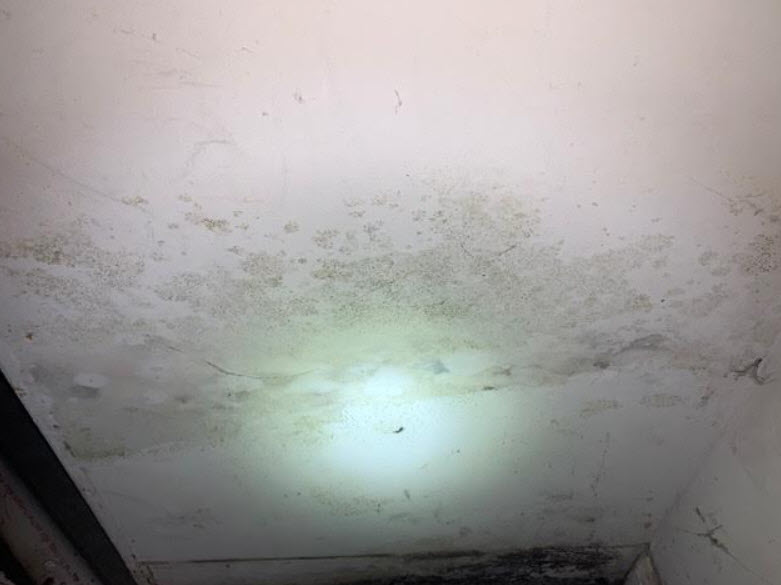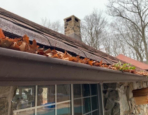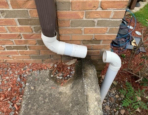This image shows mold growth and water damage on a ceiling, which is a serious concern for the homeowner. The discoloration, stains, and visible mold indicate excess moisture, likely due to a roof leak, plumbing issue, or poor ventilation.
Why This Is a Problem:
- Structural Damage – Continuous moisture exposure can weaken drywall, plaster, and ceiling joists, leading to sagging, cracking, or even collapse.
- Mold Growth & Health Risks – Mold spores can spread through the air, potentially causing respiratory issues, allergies, and other health problems, especially for children, the elderly, and those with asthma.
- Hidden Leaks & Water Intrusion – The moisture causing the mold is likely from a hidden leak in the roof, plumbing, or HVAC system. If left unaddressed, the leak can worsen, increasing repair costs.
- Poor Indoor Air Quality – Mold and mildew release spores and musty odors, affecting the air quality in the home and making it feel damp and unhealthy.
- Electrical Hazard – If moisture reaches nearby wiring or light fixtures, it could cause short circuits, power failures, or even fire risks.
- Pest Attraction – A damp environment can attract termites, cockroaches, and other pests that thrive in humid conditions.
- Decreased Property Value – Mold and ceiling damage can lower a home’s value, making it harder to sell and more costly to repair before listing.
What Should Be Done?
🚨 Immediate action is necessary! The homeowner should:
✅ Identify and fix the source of the leak (roof, plumbing, or HVAC issue).
✅ Remove and replace damaged drywall to prevent further mold spread.
✅ Improve ventilation in the affected area to reduce moisture buildup.
✅ Use mold remediation treatments to kill spores and prevent regrowth.
✅ Inspect the attic or upstairs space for additional water intrusion.
Ignoring this problem can lead to serious health issues, escalating repair costs, and long-term structural damage. A professional mold inspection and leak repair are highly recommended to fully resolve the issue. 🏠💧⚠️



